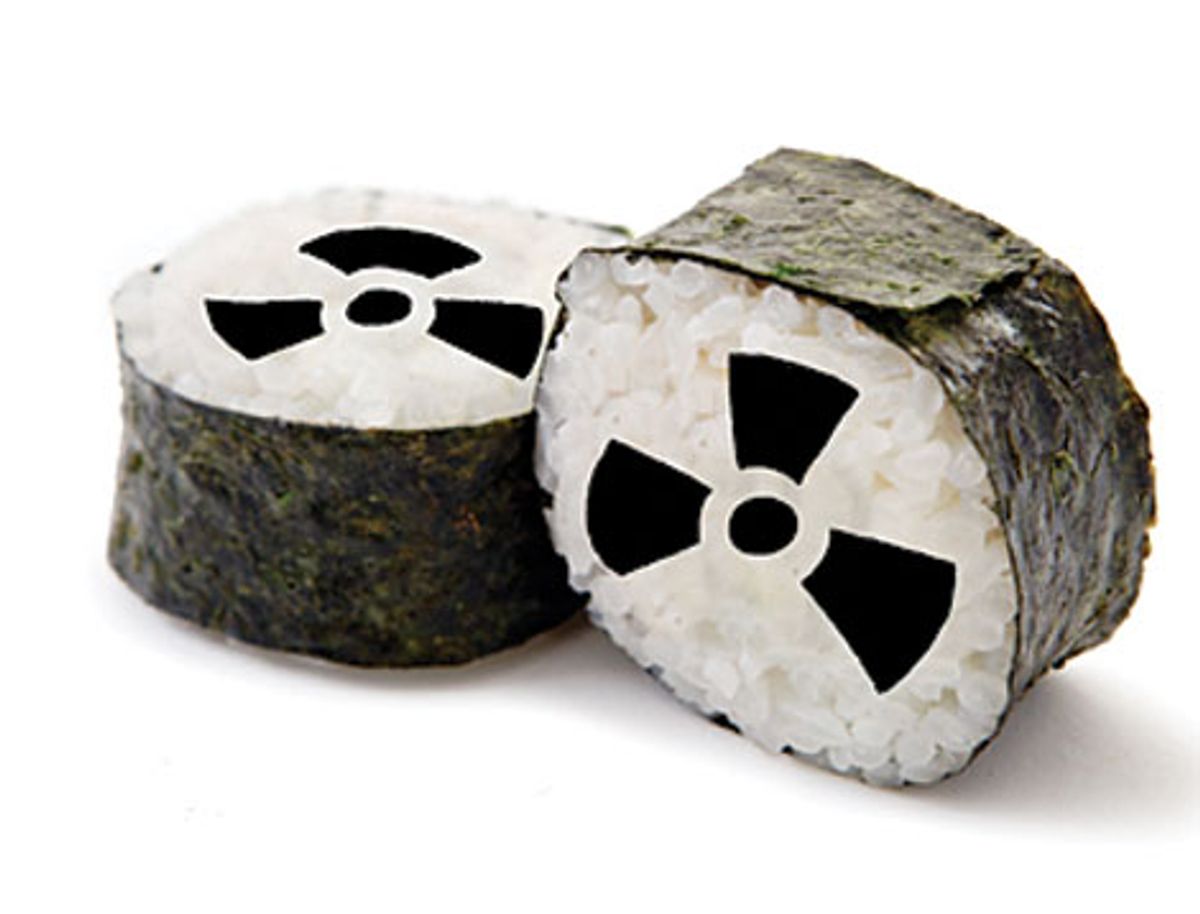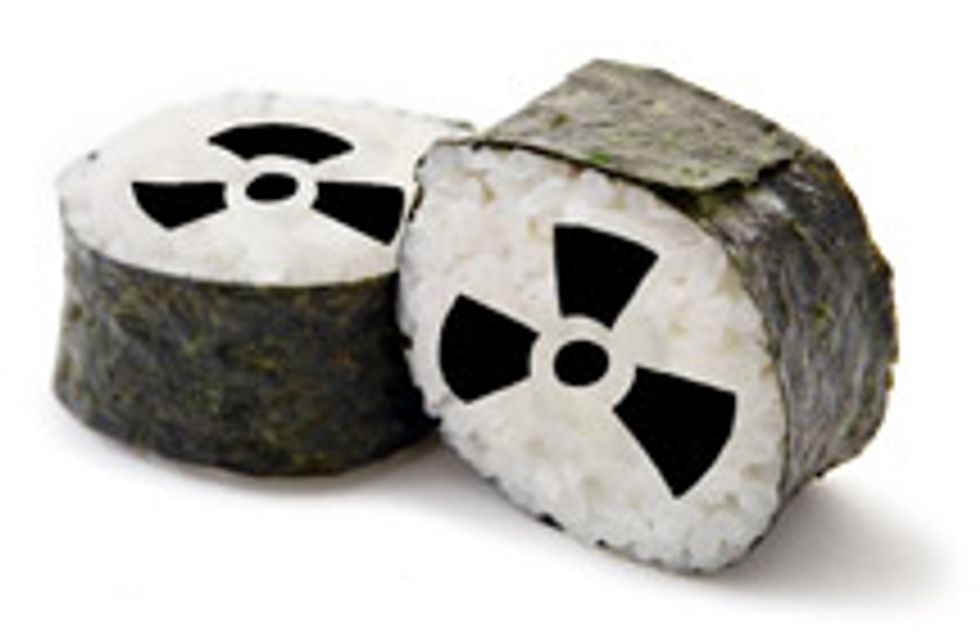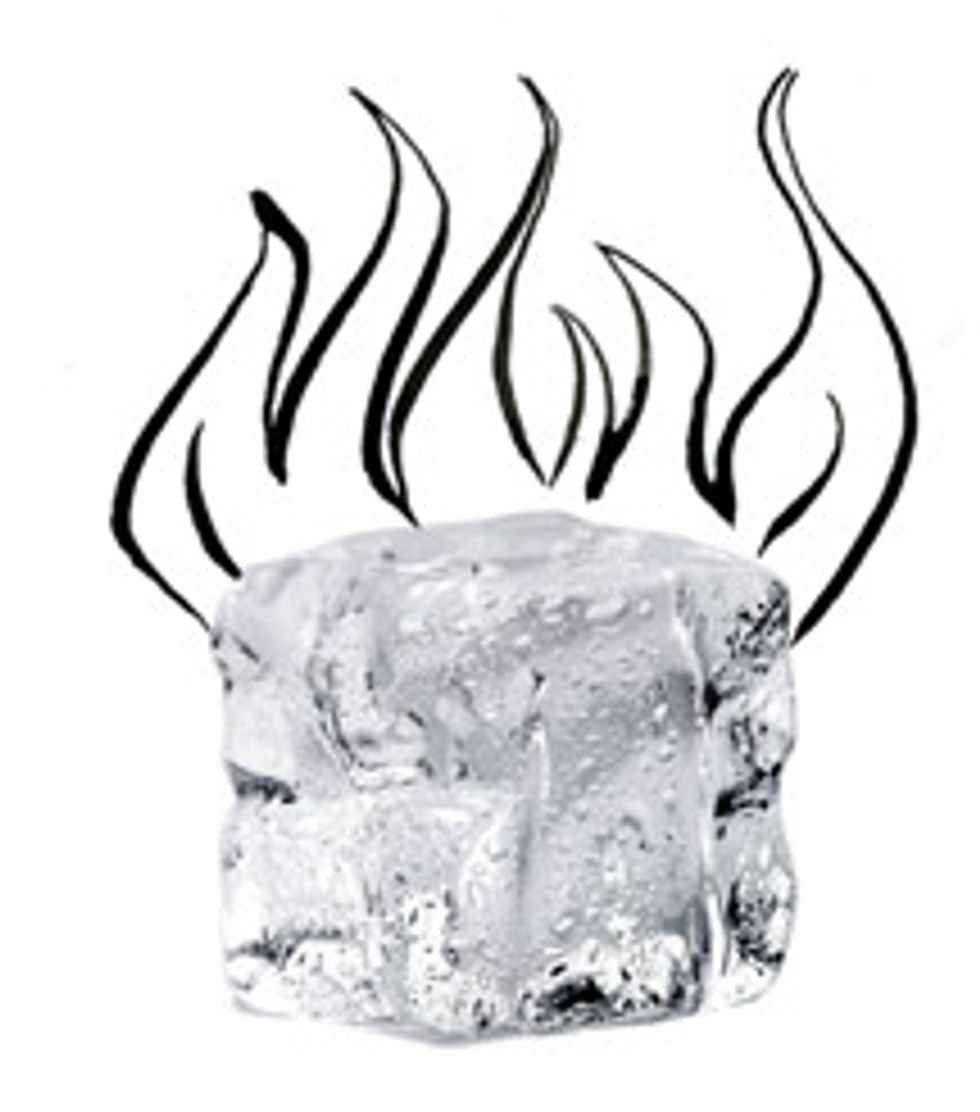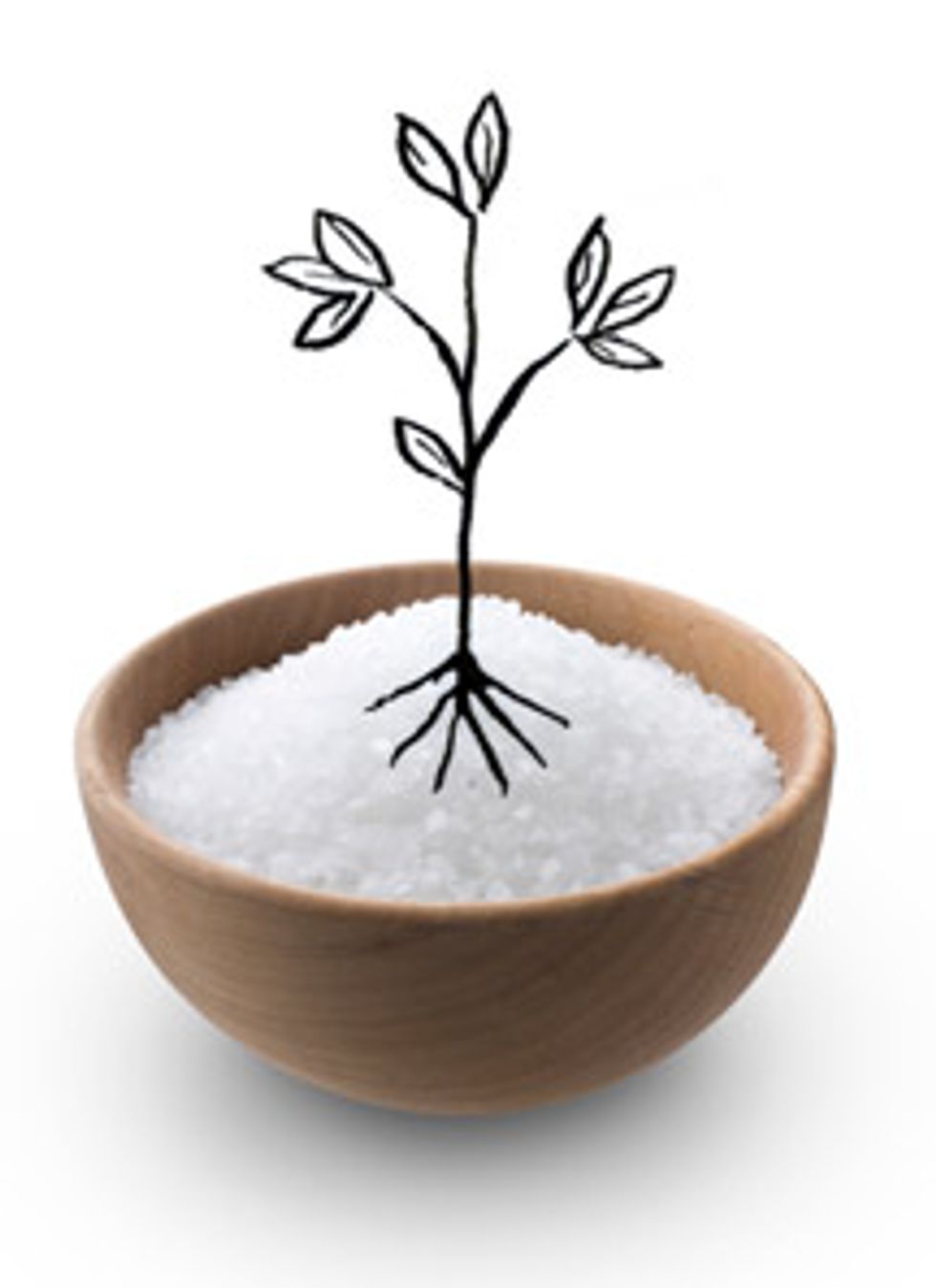Powered by Crazy
These water and energy schemes are so crazy they just might work

The world is full of schemes for saving water and doing the same for energy.
And to abuse a cliché, these seven schemes are so crazy, they just might work. The seawater greenhouse, for example, can create agriculture in deserts and fresh water from the ocean—all on an ultratight energy budget. With atmospheric water generation (and a good supply of electricity), you might pull potable water from thin air. Someday we might even get uranium from seawater or pure hydrogen from pee.
Even if they don’t work, they at least show fresh, if perhaps weird, ways of thinking about old problems, and that’s exactly what we need.
Moisture Whip
A major hurricane releases enough mechanical energy to sustain the planet for several years. If you could figure out a way to harness and store that energy, you’d have a cheap, renewable, emissions-free power source.
Canadian engineer Louis Michaud says he can do just that. Into his Atmospheric Vortex Engine—basically a large cylindrical room—he plans to inject warm air and steam to create a whirlwind. Once it gets going, the vortex should become self-sustaining and will be used to drive a turbine. Michaud estimates that a 200-meter-diameter machine could produce 200 megawatts.
Sound too good to be true? Probably, but it’s at least theoretically workable. An evaluation by a group of engineers at the Canadian Academy of Engineering damned the project with faint praise by stating that the idea ”does not defy known physics.”
Uranium From Seawater
The world’s oceans contain about 4 billion metric tons of uranium, a thousand times as much as is available in all the world’s mines. But that nuclear-power treasure trove exists in concentrations of just 3 parts per billion. Retrieving it and separating it from all the other parts has been impractical, to say the least.
But researchers in several countries, including Japan and India, think they’ve figured out a way to get their hands on that watery uranium: by harvesting it, literally. In Japan, the Mitsubishi Research Institute has proposed genetically engineering seaweed that will selectively absorb the heavy metal. When the plants are mature, they’ll cull them, dry them, and extract the uranium. What to do with the leftover seaweed? Turn it into biofuels, of course!
The Japan Atomic Energy Commission, meanwhile, has engineered a synthetic polymer that adsorbs uranium, trapping the substance as the water flows through. After pickling a long, braided tendril of the uranium-catching fiber for 30 days, researchers were able to capture 1.5 grams of yellowcake uranium in every kilogram of the fiber.
Some major stumbling blocks remain, including the energy needed to remove the uranium from the seaweed and the recyclability of the synthetic fibers. And not everyone is convinced the method will work. The French Atomic Energy Commission, which had been collaborating with India on uranium harvesters, recently bailed out.
Free Energy? Urine Luck!
You may not think of urine as a valuable resource—quite the opposite, probably—but Ohio University chemical engineer Gerardine Botte has come up with a way to harness it for good. Botte’s technology efficiently produces hydrogen for fuel-cell-powered cars, from urine.
Dry out that urine and you’re left with a compound called urea, a single molecule of which contains four hydrogen atoms. The bonds that bind urea’s hydrogen are much easier to break than the hydrogen bonds in water, which is typically used as the source for hydrogen in fuel cells. Experimenting with human urine, Botte showed that applying a mere 0.37 volt did the trick, much less than the 1.23 V required to split water. What’s more, urea yields twice as much hydrogen per molecule.
Botte’s research might lead to cheaper hydrogen for fuel cells as well as cheaper wastewater purification: A scaled-up version of the technology could generate hydrogen while treating sewage.
Atmospheric Water Generation
Extracting freshwater from thin air is a seductive idea, especially for arid places that see little rainfall but are also very humid, like parts of Mexico and South America. A number of companies now sell home-scale atmospheric water generators—basically glorified dehumidifiers.
The WaterMill, for example, from Canada’s Element Four, can produce up to 11 liters of drinking water a day (what an average family might use on a tight water budget). The appliance uses an ultraviolet lamp to kill bacteria and bugs. Element Four dreams of using its atmospheric generators to supply safe drinking water in poor rural areas. But a planned 20-liter-per-day generator can soak up 720 watt-hours per liter, and such places often have an unstable electricity supply, or none at all. And when you consider where the electricity comes from, the WaterMill makes even less sense. A typical coal-fired power plant consumes about 1.8 liters of water per kilowatt-hour of electricity generated. If that’s your power source, it would actually take 1.3 liters of water to make one liter of water. Really.
Still, the device is headed for testing in Australia, Mexico, South America, and the Bahamas, where the main goal is just to have a consistent source of clean water, no matter the energy cost.
Fire Ice
Researchers have been studying methane hydrate for decades. The volatile substance, a combination of methane gas and water ice, exists in cold and high-pressure environments, such as Alaskan permafrost or beneath ocean sediments. Scientists estimate that the world’s supply of methane hydrate could dwarf the combined energy stored in all other fossil fuels. And methane is a much cleaner-burning fuel than gasoline, oil, or coal.
Extracting it is a different story. Think of methane hydrate as an icy cage that traps the methane molecules inside. To release the natural gas, you either warm the substance or ease the pressure; the methane vaporizes, essentially leaving behind a puddle of water. Accessing the methane hydrate to do either of these has proved difficult because the energy costs of both nearly outweigh the benefits.
But there might be another reason to tap the substance. Most research has focused on extracting the methane, but it turns out the water itself may have value. ”The water from gas hydrates will by nature be fresh with no impurities,” says Timothy Collett of the U.S. Geological Survey. A team of researchers at Sandia National Laboratories led by geochemist Jeffery Greathouse has looked into separating methane hydrates from the salty water that surrounds them by exploiting the density difference between the salt water and the hydrate-trapped freshwater.
But the researchers will still face the same problem that’s stymied scientists elsewhere: figuring out a cost-effective way to separate the methane from the water. Despite heavily funded studies in many countries, including the United States, Japan, India, and China and funding in the hundreds of millions, nobody has managed to do that.
Desert Greenhouse
Many millions of people around the world live in poor coastal areas where they have too little freshwater to grow their own food. In theory they could desalinate seawater, but they can’t afford to. For those folks, London-based Seawater Greenhouse thinks it has the answer: a greenhouse that repurposes ocean water into plant-sustaining humidity and potable water.
According to the company, the greenhouse re-creates the planet’s natural hydrological cycle. Ocean water trickles slowly down the building’s front lattice wall, cooling air as it evaporates; fans blow the cool, moist air through the greenhouse, providing optimal growing conditions for the plants. At the back of the greenhouse, the cool air mixes with hot, dry air from the greenhouse roof. The resulting hot, saturated air passes through a seawater-cooled condenser, and voilà: purified water. All that and you can grow tomatoes, cucumbers, and lettuce, too.
Three pilot greenhouses are already up and running in the Canary Islands, Oman, and the United Arab Emirates, and the company now has grander plans for something it’s calling the Sahara Forest Project, which aims to revegetate the African desert.
Worth Their Salt
Mangroves have found ways to thrive in saline habitats, and these clever trees may hold the key to ultracheap desalination and water purification.
Mangroves can grow in even the saltiest water by trapping up to 97 percent of the salt in their roots. What little salt does get through is excreted through the leaves, which accumulate salt crystals that eventually blow off in the breeze. By contrast, the best desalination method that humans have come up with—reverse osmosis—suffers from a high energy demand and membranes that need frequent replacement. Scientists in Singapore are studying the trees, hoping that a better understanding of the mangrove’s seawater-filtering mechanism could lead to cheaper ways to desalinate water that don’t require huge amounts of electricity.
However, mangrove-based technologies won’t eliminate the toxic brine by-product that plagues all desalination methods.
To Probe Further
Check out the rest of the special report: Water vs Energy.







